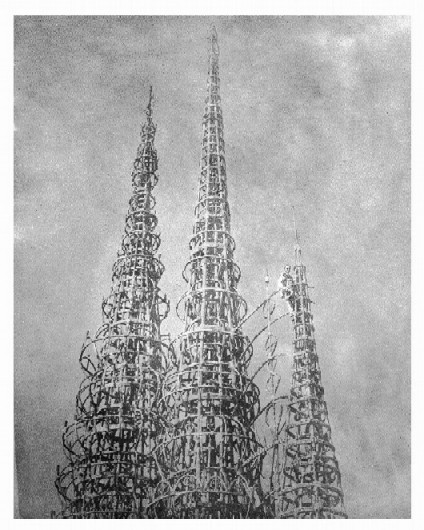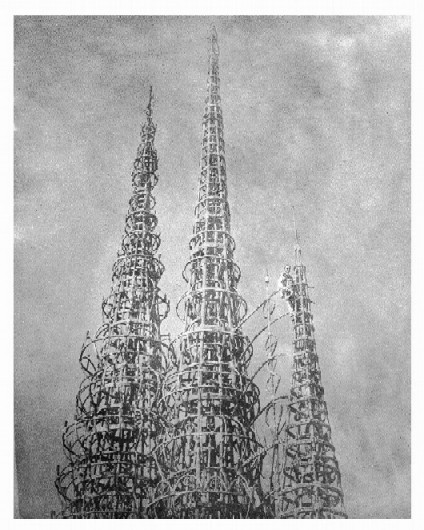
"You gotta do something they never got' em in the world." Simon Rodia (1875-1965,) top right.
I have chills all over every time I look at this picture of Simon Rodia because it is an undeniable testament to the enormity of Rodia's achievement: the Towers he single-handedly built on his residential lot in Watts over 33 years every evening after working a construction job and every Sunday, without nails, rivets, bolts, gloves, drill, blueprint, diplomas. I also love this close-up because it shows that Simon did it with immense pride and joy.
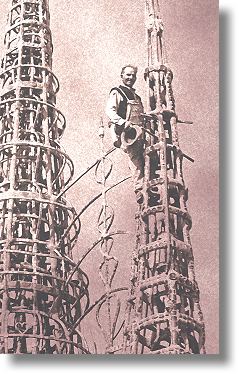
With their documentary feature "I Build the Tower," Edward Landler and Brad Bryer have completed the fundamental task of immortalizing the story of Simon Rodia and the Watts Towers of Los Angeles. Inspired by their admiration for Uncle Sam (Brad Byer is Rodia's great-nephew,) the two filmmakers have labored for the last fifteen years to present to us a loving yet objective portrait of Simon Rodia, what inspired him as an artist, what made him a genius of structural engineering and what were the forces at work in his spiritual life. The film spends equal time on Rodia's offspring, the Watts Towers, and their fight to stand on their own after Rodia made the final move from Watts to Martinez.
Early in the film, the writers/producers take us on a trip to Rodia's native Southern Italy and the small village where he was born. Fields of wheat and flowers are intercut with images of corn and plants encrusted in the Towers. In a particularly moving sequence, the filmmakers show us the rich architecture that may have impressed 14-year old Simon when he stopped in Naples on his way to board the ship to America. Segments of an old black and white silent film, "The Immigrant Life," backed by Rodia's audio interviews, illustrates Rodia's early adult American life marred by poverty, alcoholism, and his neglect and mistreatment of his wife and children, a behavior that will haunt him until his final days in Martinez.
It is Rodia's broken English which makes my heart break open every time I see this documentary. To me, it exposes Rodia's struggle with his parents' decision to send him away to America only to never see them again. "You aint got a dollar in a pocket you in a hole." Refusing to lose his identity as an Italian, Simon becomes in these audio-interviews the broken-accented voice of the thousands of anonymous immigrant men who built and are still building America's wealth with bare hands and pockets, at the cost of dislocated families. Listening to his simple but profound truths, especially in relation to Watts' deterioration into a "ghetto" after World War II, we can't help but feel that the Towers were his personal triumph over the limitations that society was trying to impose upon him. "Maybe I'll go to the sky," Simon said while building the towers.
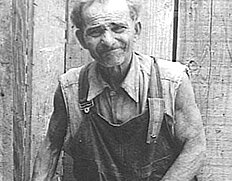
"Poor class of people all over the world, they no free... You gotta do what the boss says. Wrong or no wrong." S.R.
In 1923 Rodia bought for $500 the now famous residential lot, home of the Watts Towers. The filmmakers introduce a new character in the story: the neighborhood of Watts where there was no race covenant so Jews, Blacks, Philipinos, Latinos, Asians and Europeans could move in. Interviews with Sam Rodia's neighbors creates a vivid picture of life in Watts during the Second World War and Sam's relationship to his neighbors and how they viewed the towers. Then one day, in 1954, the Towers finished and his health deteriorating, Rodia gives the title to his lot to a neighbor friend and deserts the Towers to go live near his sister in the town of Martinez.
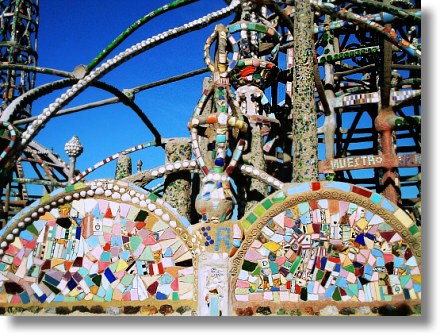
Details of Simon's mosaic work courtesy of Edward Landler and Brad Byer.
The documentary also emphasizes Sam Rodia's importance as a structural engineer. Interviews with R. Buckminster Fuller and other experts reveal the complexities of Rodia's technique and the genius behind the construction of towers 99' high in a foundation of only 14" deep using "tools that predated the industrial era." The story of the survival and preservation of the Towers begins when the City identifies the Towers as a safety hazard and orders their destruction if they fail a load test. Neighbors, artists, Angelenos and engineers rally together on this historic day of 1959. A City engineer still remembers with a irrepressible smile the moment when "instead of the towers being deflected, the City truck was lifted into the air."
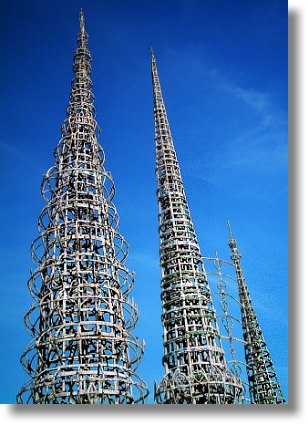
Power to the Towers! Photo courtesy of Edward Landler and Brad Byer.
The Towers never made Rodia rich, it was a 100% self-financed endeavor, but Rodia did get the standing ovation he deserved. The fight to preserve the Towers, a National Historic Landmark since 1990, and to give Rodia and his legacy the place they deserve in Los Angeles history still rages on. In 2000, LA WEEKLY writer Doug Harvey decried the absence of Simon Rodia and other "self-taught outsiders" in a major retrospective, “At the End of the Century: One Hundred Years of Architecture,” at MOCA’s Geffen Contemporary. Yet, we Angelenos, recipients of Rodia's gift, should be glad that Sam bought the lot in Watts instead of another lot he could have bought for the same price. The Towers would not have survived the fight against developers vying for what has become one of the most expensive street corners in Los Angeles.
Some people thought Sam was crazy but a madness artist John Outterbridge - and former Director of the Watts Towers Arts Center - says "is necessary." Thanks to Edward Landler and Brad Byer, Simon Rodia, the little man with no formal education who set out to "make a tower different than Galileo," and built the longest reinforced concrete columns in the world, will never be forgotten. If I could find one missing piece in this film, it is the absence of today's Watts residents and the significance the Towers has for them. If the filmmakers didn't address this issue, they did give the film a modern beat. The title song, "Yo Sam" aka the Rodia Rap, was conceived by the filmmakers using Sam's words: "I build the tower people like, everybody come."
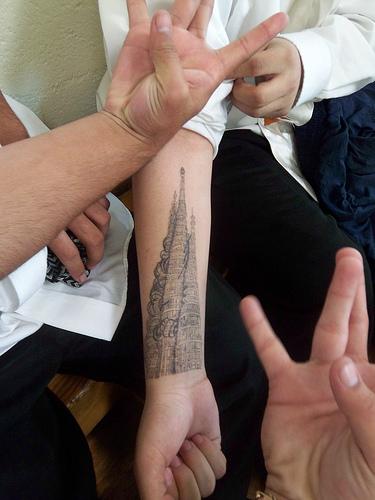
Photo courtesy of Christopher Vasquez found on flickr.com.
In our recent TACO interview, Edward Landler talked about his hope for a theatrical distribution that would make Simon Rodia's stunning achievement known to the public at large. In the meantime, "I Build the Tower" the DVD, a must-watch and must-have for all proud Angelenos, is available for purchase at ibuildthetower.com, the filmmakers' website where you can also find more information on the Towers. If you're in Los Angeles, go visit the Towers, if you're unable to see them for yourself, flickr.com has a fabulous collection of pictures of the Towers seen from all possible angles, under different lights, including close-ups of Rodia's stone, glass, mosaic and tile work.
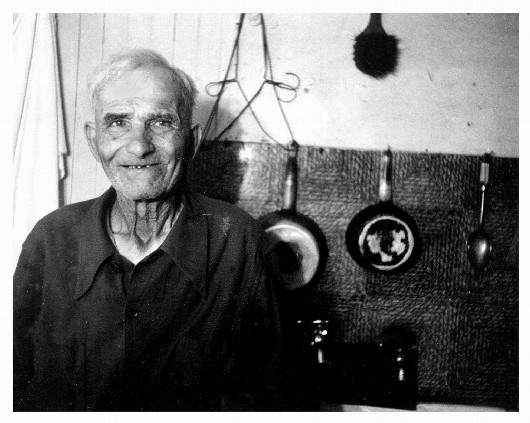
Simon Rodia in Martinez in 1960, photo courtesy of Edward Landler and Brad Byer.
